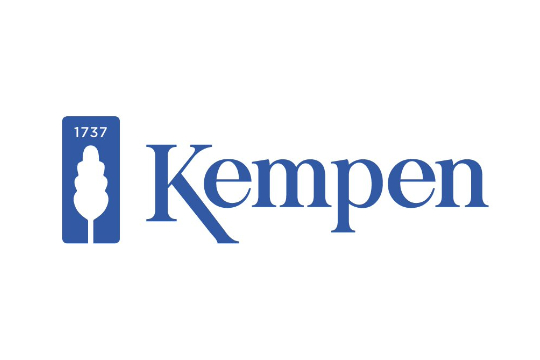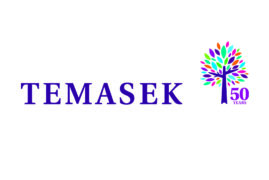This article is featured in the 2024 FCLTGlobal Blue Book, a collection of real-world examples of how our members are putting long-term strategies into practice today. We hope that these practical illustrations will inspire others to embrace the mission of focusing capital on the long term. Learn more >>
At Aon, we exist to shape decisions for the better – to protect and enrich the lives of people around the world. As our world becomes more volatile – economically, socially, and geopolitically – organizations and individuals are under constant pressure to make complex decisions, sometimes without the necessary facts, almost always at speed, and with a new degree of meaning and purpose.
According to our recently-released Global Risk Management Survey, the inability to attract and retain talent now ranks as a top risk for leaders, highlighting the increasingly critical role of business leaders, including people (HR) leaders, in driving interconnected and interdependent decisions around what enables people to thrive. As a result, organizations are rapidly reevaluating their workforce plans in a more holistic way by introducing new operating models, improving location strategies, redesigning rewards and benefits programs, and exploring how new technologies like artificial intelligence (AI) will influence future workforce requirements – all with an increasingly personalized and inclusive lens.
A New Era of Thriving
Wellbeing is top concern for employees and employers alike. Aon’s Global Wellbeing Survey identified that 50 percent of global employees are resilient, which demonstrates significant untapped potential in talent productivity and performance. Employees continue to express a strong desire for improved work-life balance, greater inclusivity, and mission-driven work. People are also living longer, meaning both their careers and retirement years are getting longer and retaining tenured employees presents new considerations.
We are also realizing that addressing these challenges with traditional approaches is no longer enough:
- Managing programs and budgets alone is not moving the dial – business leaders must use data, advanced analytics, and technology to optimize sustained workforce impact.
- New compliance regimes like pay transparency require urgent attention and create exciting opportunities for transformational change.
- The links between wellbeing and sustainable high performance is no longer theoretical with the emergence of new ways to measure and report on human sustainability are emerging.
Opportunities to Address Human Capital
Our research demonstrates that organizations are more interested in wellbeing than ever before, however part of that interest stems from the fact that access to health care remains a challenge and costs are at an all-time high. For employees to be engaged, productive and successful, they need to be well. Despite evidence that improving employee wellbeing increases company performance by between 11 and 55 percent, many organizations are still uncertain how to capitalize on the opportunity.
At Aon, we have developed a data-driven approach to wellbeing that integrates our Human Capital – health, wealth, and talent – expertise in a simple way that focuses on connected value for our clients. This includes a spectrum of solutions that meets clients where they are:
- Health solutions: We provide world class support to employees in times of need. By using data-driven insights we can identify specific population health risks and offer targeted and inclusive solutions for clients, including the connection to appropriate and affordable care. This approach can reduce costs by up to 24 percent and increase colleague health by 10 percent or more.
Wellbeing solutions: Through employee listening, digital assessments, data-led strategic insights, and scalable learning solutions, we educate colleagues, managers, and leaders on how to empower themselves and their teams to thrive in today’s world. Collectively, this approach drives wellbeing, inclusion, and sustainable performance and can improve individual and team wellbeing by 20 percent.
- Human Sustainability solutions: We reimagine organizations with a human lens by integrating our health care and wellbeing data into core talent strategies. We visualize this via our Human Sustainability Index (HSI) dashboard, which links organizational HSI data with benefit, diversity, engagement, ways of working, and performance data to drive new insight and holistic strategies for talent and sustainability outcomes. These solutions are leading edge and enable organizations to identify optimal factors that drive sustainable performance, such as flexible working arrangements versus compensation.
Aon’s Investment in Human Sustainability
Aon is committed to advancing our approach to wellbeing. Since 2020, Aon has invested in innovative ways to accelerate this mission with its own colleagues and clients, including developing a Human Sustainability approach. Drawing on our existing health care approach, we designed a data strategy that would enable us to progress over time. This meant further developing the HSI, a tool that measures wellbeing, resilience, and sustainability at the individual, team, and organizational levels. HSI is now fully integrated into our early careers, (new and existing) manager and high-performance programs. The data enables our firm to tailor digital learning and coaching interventions to specific needs as they arise, and to identify skills gaps for the future.
We now leverage the HSI dashboard to help us meet and monitor real time challenges, such as our wellbeing response to climate disasters for affected colleagues and teams, as well as the long-term sustainability of our talent and its impact on our sustainable business performance. This helps us to report on and ultimately predict what investments and interventions will have the greatest impact going forward.
To learn more about our Human Sustainability Index, visit https://www.aon.com/en/capabilities/workplace-wellbeing/human-sustainability-index


